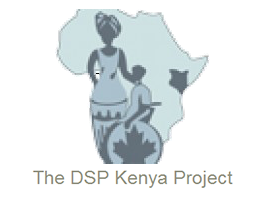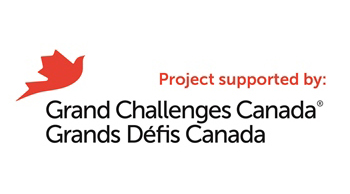4.4 – What are the rehabilitation interventions that can address the activity limitations and participation restrictions common among children and youth living with HIV?
Rehabilitation encompasses much more than just treating impairments.
A broader and more holistic rehabilitation approach should take into account the activity limitations and participation restrictions that affect children living with HIV.
- Assessment and early treatment of impairments can prevent secondary complications from developing. This can help prevent potentially disabling conditions from getting to a point where they limit a child’s ability to go to school and participate in age appropriate activities.
- Referral to appropriate medical and social structures to address concerns quickly and effectively can help ensure that children spend as little time as possible in hospital and remain an active member of their families and communities.
It is crucial that rehabilitation providers understand their roles across the spectrum of the disease process from acute, in-hospital care to long-term follow-up in the community. Each child should be viewed within her/his individual context. Their age, developmental status, and family situation are very important. Furthermore their role in school, sports and social activities must be considered when planning a holistic rehabilitation strategy.
Potential causes of these impairments and rehabilitation interventions are shown in the table below. This table is organized according to the categories of activity and participation in the World Health Organization’s International Classification of Functioning, Disability and Health (see Section 1.3).
Table 4.4: Activity Limitations and Participation Restrictions
| Activity Limitations and Participation Restrictions | Rehabilitation interventions (for details, see page 28-31) |
|---|---|
Learning and applying knowledge |
|
General tasks and demands |
|
Communication |
|
Mobility |
|
Self-care |
|
Domestic life |
|
Interpersonal interactions and relationships |
|
Major life areas including work and employment |
|
Community, social and civic life |
|
Policy advocacy |
|
Health and wellness |
|
Articulation, fluency, resonance, language advice and exercises
Advice and exercises can be given to individuals to address challenges with speaking. These include rehabilitation to improve fluency, resonance, phonation, producing sound, intonation, variance of pitch, and voice and language, as well as aeromechanical components of respiration. Individuals may be assessed by a speech language therapist and work in collaboration with the multidisciplinary team to implement therapy.
Assistive devices
The provision of assistive devices can help people with disabilities address and adapt to their environment, promoting normal lifestyle and facilitating employment and education participation. Examples of assistive devices are mobility devices, home modification devices, respiratory devices, hearing aids, and self-care equipment. In resource-poor settings assistive devices can range from low cost to high cost and some devices can be no cost. For example, individuals experiencing memory loss may set a reminder on their phone to alert them when medication needs to be taken. Other examples of low cost devices are spacers modified from plastic bottles or cups, which are used to administer medication for children. Cardboard boxes can also be used to make appropriate seats for infants with developmental delay. Non-governmental organisations in Africa can be a valuable source of assistive devices.
Energy conservation and pacing
Pacing and energy conservation techniques assist individuals to balance work, social and leisure pursuits by ensuring they have the necessary energy levels when required. Various strategies can be taught to people living with HIV by rehabilitation providers to achieve optimum energy levels. Education includes the collaborative setting of achievable goals, advice on the planning of errands to minimise fatigue, and teaching correct posture and biomechanics to ensure efficiency of activity. Adaptation of the physical environment can also assist with energy conservation, as can the prescription of assistive devices, where required. Rehabilitation and exercise sessions should be timed when individuals typically have the highest levels of energy and where necessary, to ensure the optimal effect of any medication (e.g., analgesics) that the individual may take prior to exercise.
Environmental adaptation
Environmental adaptation refers to changing or restructuring the environment to meet the needs of people with impairments. The change could involve home, work, community and/or study environments e.g., adapting the environment of the home to accommodate a person using a wheelchair by clearing passages and widening doorways.
Ergonomic interventions
Ergonomics involves the re-design of the physical environment and the use of equipment to better complement the individual living within that environment. Practical examples of applying ergonomic principles include the re-positioning of furniture in the home, school and/or workplace to decrease musculoskeletal overuse injuries, and advising regular rest intervals during sustained activities. Advice on posture and biomechanics when working or studying can also reduce undue strain and fatigue. Task analysis of an individual’s daily activities can ascertain priority areas for intervention. Knowledge of one’s country’s specific occupational and safety acts is also important to ensure that employers make the necessary adaptations for all workers, particularly those who may have physical and/or cognitive impairments. Knowledge of inclusion policy within a country can also determine adaptations to be made in schools.
Exercise
Exercise is a key strategy that may be used by people living with HIV and by rehabilitation professionals to address or prevent disability and improve or sustain the health of people living with HIV.20 Exercise is defined as any physical activity involving bodily movement produced by skeletal muscles that requires energy expenditure including (but not limited to) aerobic, resistance, flexibility and neuromotor activity beyond activities of daily living to improve and maintain physical fitness and health.21, 22
Regular exercise is widely accepted as an important part of optimal health (Stuart et al. 2009).23 In HIV, exercise has been shown to:
- Improve cardiovascular fitness
- Increase body weight
- Improve body composition
- Increase strength
- Improve quality of life, improve mood and decrease stress
Exercise prescription – aerobic
Aerobic (also known as cardiovascular) exercise includes activities such as walking, jogging, stepping, swimming and cycling. Aerobic exercise has been shown to be beneficial for people living with HIV, including interventions conducted in sub-Saharan Africa,24, 25, 26, 27 conferring physical benefits as well as improving mental health and quality of life and reducing symptoms of depression. These exercises can be done at little or no cost and can be performed with fellow patients, friends and family members. Although few studies investigate the role of aerobic exercise in children living with HIV, preliminary results suggest that it is an appropriate intervention provided the child is not acutely ill.
Exercise prescription – strength
Strength (or resistance) training involves exercises that overcome either internal or external forces using body weight or a variety of equipment including free weights (dumbbells and barbells), machine weights, resistance bands/tubing and hydrotherapy. When correctly taught, these exercises can improve muscle strength, power, endurance and coordination, and also improve daily functioning and quality of life. This form of exercise has been shown to be safe and beneficial for people living with HIV.28 Although few studies investigate the role of strengthening exercise in children infected with HIV, preliminary results suggest that it is an appropriate intervention if the child is not acutely ill.
Exercise prescription – stretching and passive movement
Passive movement is the movement of separate parts of an individual’s body by the rehabilitation provider or by another external force. Passive movements and stretching exercises can help improve flexibility and circulation, normalise muscle tone and reduce the risk of contractures and pressure sores. Family members and friends can be taught to assist with these exercises, providing both a therapeutic intervention as well as an opportunity for interaction and involvement with others. Static stretching exercises can be taught to individual patients while proprioceptive neuromuscular facilitation (PNF) techniques should always be instructed by a trained professional.
Nutritional advice
Poor diet has a direct effect on the immune system. Advice on nutrition must be tailored to the
individual and her/his circumstances. People living with HIV may suffer from weight loss or weight gain. Individuals need to eat a balanced diet with fat, carbohydrates and protein. Individuals could be advised to eat several small meals per day using what is available to supplement all food groups. Individuals may be further advised, to keep log books on their weight and diet, with education on warning parameters for weight loss or gain. Dieticians or nutritionists may recommend daily multivitamins. It is important however to consider possible interactions of dietary supplements and ARVs.29 Referral can be made to a dietician (when available) who may conduct a nutritional assessment, counsel individuals, or assist with food provision through referral to nutrition supports. Alternatively, rehabilitation providers can encourage people living with HIV to begin subsistence farming and set up vegetable gardens or small animal rearing projects to produce food. Any advice on nutrition must include information on adequate hydration level for each individual.
Psychosocial rehabilitation
More specialised psychological rehabilitation services can be offered by specifically trained professionals, including psychiatrists, psychologists, psychotherapists and occupational therapists. However, primary prevention, in the form of exercise, adequate nutrition and maximizing quality of life falls within the scope of all rehabilitation providers. Social support structures, such as support groups, friends, family, cultural, religious and other community organisations, can also provide emotional and practical support.
Return to school strategies
The rehabilitation provider can work together with the child, family and educators to prepare a child for return to school. This is particularly important after long absences, when the child has been extremely ill, or is returning with a new disability. The peers of the returning child should be prepared and given strategies to support their friend.
20Botros D, Somarriba G, Neri D, Miller TL. Interventions to address chronic disease and HIV: strategies to promote exercise and nutrition among HIV-infected individuals. Curr HIV/AIDS Rep. 2012 Dec;9(4):351-63. doi: 10.1007/s11904-012-0135-7. Review. PubMed PMID: 22933247; PubMed Central PMCID: PMC3492509.
21Garber CE, Blissmer B, Deschenes MR, Franklin BA, Lamonte MJ, Lee IM, Nieman DC, Swain DP: American College of Sports Medicine position stand. Quantity and quality of exercise for developing and maintaining cardiorespiratory, musculoskeletal, and neuromotor fitness in apparently healthy adults: guidance for prescribing exercise. Med Sci Sports Exerc 2011, 43:1334-1359.
22World Health Organization (WHO). Health Topics: Physical Activity [http://www.who.int/topics/physical_activity/en/] n.d. Accessed Jan 10, 2015.
23Stuart M, Chard S, Benvenuti F, Steinwachs S. Community exercise: a vital component to healthy aging. Healthc Pap. 2009;10(1):23-8; discussion 79-83. Review. PubMed PMID: 20057213. http://www.ncbi.nlm.nih.gov/pubmed/20057213.
24Maharaj SS, Chetty V. Rehabilitation program for the quality of life for individuals on highly active antiretroviral therapy in KwaZulu-Natal, South Africa: a short report. Int J Rehabil Res. 2011;34:360-365.
25Roos R, Myezwa H, van Aswegen H, Musenge E:. Effects of an education and home-based pedometer walking program on ischemic heart disease risk factors in people infected with HIV: a randomized trial. J Acquir Immune Defic Syndr. 2014;67:268-276.
26Mutimura E, Stewart A, Crowther NJ, Yarasheski KE and Todd Cade W. The effects of exercise training on quality of life in HAART-treated HIV-positive Rwandan subjects with body fat redistribution. Quality of Life Research. 2008a: 17: 377–385.
27Mutimura E, Crowther NJ, Todd Cade W, Yarasheski KE, and Stewart A. Exercise reduces central adiposity and improves metabolic indices in HAART-treated HIV-positive subjects in Rwanda: a randomized controlled trial. AIDS Research. 2008b:24: 5-23.
28O'Brien KK, Tynan AM, Nixon SA, Glazier RH. Effectiveness of Progressive Resistive Exercise (PRE) in the context of HIV: systematic review and meta-analysis using the Cochrane Collaboration protocol. BMC Infect Dis. 2017 Apr 12;17(1):268. doi: 10.1186/s12879-017-2342-8. Review. PubMed PMID: 28403830; PubMed Central PMCID: PMC5389006.
29Jalloh MA, Gregory PJ, Hein D, Risoldi Cochrane Z, Rodriguez A. Dietary supplement interactions with antiretrovirals: a systematic review. Int J STD AIDS. 2017 Jan;28(1):4-15. doi: .1177/0956462416671087. Epub 2016 Sep 27. Review. PubMed PMID: 27655839.

 Previous Page
Previous Page




